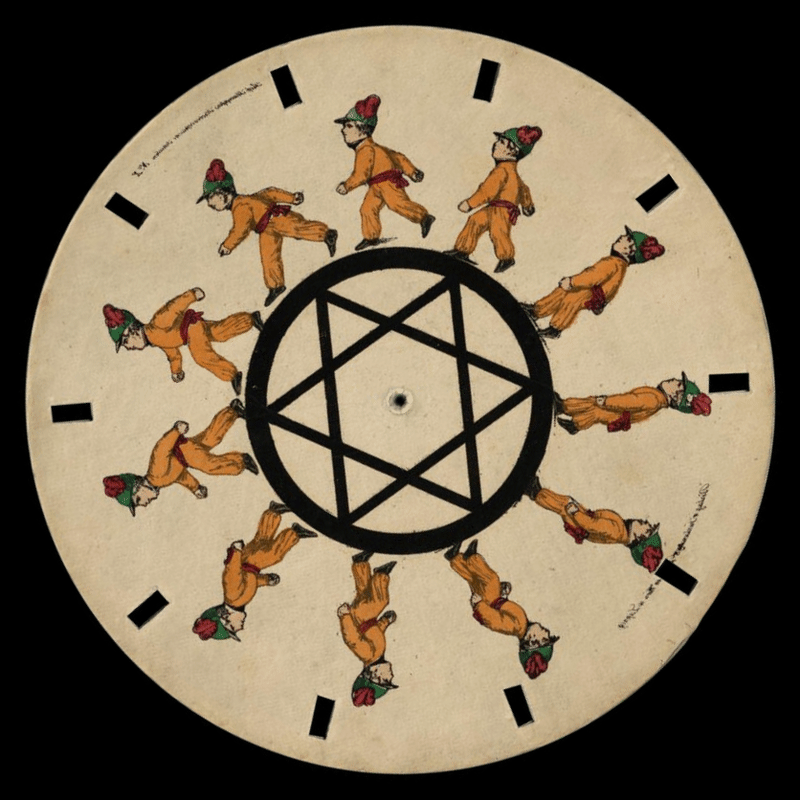|
Madame Butterfly's Illusion
is a 1940 Japanese animated short. It was directed by Wagorō Arai, a dentist who created nearly a dozen short films between 1939 and 1947 in the style of silhouette animation. It is based on parts of the opera Madama Butterfly by Giacomo Puccini. Plot A Japanese woman reflects on her ill-fated marriage to an American naval officer. She ultimately concludes that "it is better to die with honor than live in shame." Production Outside of his work as a dentist, Arai collaborated with a small group of friends (particularly Tobiishi Nakaya) to create roughly one short animated film each year between 1939 and 1947. All of these films are in the style of silhouette animation and many, including ''Madame Butterfly's Illusion'' (1940), ''Jakku to mame no ki'' (''Jack and the Beanstalk'', 1941), and ''Kaguyahime'' (''Princess Kaguya'', 1942), are based on popular tales. It is believed that Arai - despite his talents as an animator - stopped creating films soon after World War II because ... [...More Info...] [...Related Items...] OR: [Wikipedia] [Google] [Baidu] |
Japanese Black-and-white Films
Japanese may refer to: * Something from or related to Japan, an island country in East Asia * Japanese language, spoken mainly in Japan * Japanese people, the ethnic group that identifies with Japan through ancestry or culture ** Japanese diaspora, Japanese emigrants and their descendants around the world * Japanese citizens, nationals of Japan under Japanese nationality law ** Foreign-born Japanese, naturalized citizens of Japan * Japanese writing system, consisting of kanji and kana * Japanese cuisine, the food and food culture of Japan See also * List of Japanese people * * Japonica (other) * Japonicum * Japonicus This list of Latin and Greek words commonly used in systematic names is intended to help those unfamiliar with classical languages to understand and remember the scientific names of organisms. The binomial nomenclature used for animals and plants i ... * Japanese studies {{disambiguation Language and nationality disambiguation pages ... [...More Info...] [...Related Items...] OR: [Wikipedia] [Google] [Baidu] |
1940 Films
The year 1940 in film involved some significant events, including the premieres of the Walt Disney films '' Pinocchio'' and '' Fantasia''. Top-grossing films (U.S.) The top ten 1940 released films by box office gross in North America are as follows: Events * February 10 – Tom and Jerry make their debut in the animated cartoon ''Puss Gets the Boot''. *February 23 – Walt Disney's second animated feature film '' Pinocchio'' is released. Although not a box office success upon its initial release, the film receives critical acclaim and wins two Academy Awards, including one for Best Original Song for " When You Wish Upon a Star". Over the years, ''Pinocchio'' has gained a cult following and is now considered one of the greatest films of all time. * April 12 – Alfred Hitchcock's first American film ''Rebecca'' is released, under the production of David O. Selznick. It would go on to win the Academy Award for Best Picture the following year. * May 17 – '' My Favorite Wife ... [...More Info...] [...Related Items...] OR: [Wikipedia] [Google] [Baidu] |
Films Based On Madama Butterfly
A film also called a movie, motion picture, moving picture, picture, photoplay or (slang) flick is a work of visual art that simulates experiences and otherwise communicates ideas, stories, perceptions, feelings, beauty, or atmosphere through the use of moving images. These images are generally accompanied by sound and, more rarely, other sensory stimulations. The word "cinema", short for cinematography, is often used to refer to filmmaking and the film industry, and to the art form that is the result of it. Recording and transmission of film The moving images of a film are created by photographing actual scenes with a motion-picture camera, by photographing drawings or miniature models using traditional animation techniques, by means of CGI and computer animation, or by a combination of some or all of these techniques, and other visual effects. Before the introduction of digital production, series of still images were recorded on a strip of chemically sens ... [...More Info...] [...Related Items...] OR: [Wikipedia] [Google] [Baidu] |
Japanese Short Films
Japanese may refer to: * Something from or related to Japan, an island country in East Asia * Japanese language, spoken mainly in Japan * Japanese people, the ethnic group that identifies with Japan through ancestry or culture ** Japanese diaspora, Japanese emigrants and their descendants around the world * Japanese citizens, nationals of Japan under Japanese nationality law ** Foreign-born Japanese, naturalized citizens of Japan * Japanese writing system, consisting of kanji and kana * Japanese cuisine, the food and food culture of Japan See also * List of Japanese people * * Japonica (other) * Japonicum * Japonicus This list of Latin and Greek words commonly used in systematic names is intended to help those unfamiliar with classical languages to understand and remember the scientific names of organisms. The binomial nomenclature used for animals and plants i ... * Japanese studies {{disambiguation Language and nationality disambiguation pages ... [...More Info...] [...Related Items...] OR: [Wikipedia] [Google] [Baidu] |
Murata Yasuji
was a pioneering animator who helped develop the art of anime in Japan. Studying the animation techniques of Sanae Yamamoto, Murata produced dozens of mostly educational films at the Yokohama Cinema studio featuring such characters as Momotarō and Norakuro. Along with Noburō Ōfuji, he was renowned as a master of cutout animation.Official booklet, ''The Roots of Japanese Anime'', DVD, Zakka Films, 2009. Among his students were such animators as Yoshitarō Kataoka. Selected filmography *''Dōbutsu Orinpikku taikai is a Japanese animation film from 1928. It was directed and animated by Yasuji Murata for Yokohama Cinema Shōkai. Plot At the Olympic Games of animals, the most diverse species of animals compete in the sporting disciplines. Monkeys do gy ...'', 1928 nimal Olympics*''Tarō-san no kisha'', 1929 aro's Train*''Saru Masamune'', 1930 he Monkey Masamune*''Oira no yakyū'', 1930 *''Sora no Momotarō'', 1931 *''Norakuro gochō'', 1934 References External l ... [...More Info...] [...Related Items...] OR: [Wikipedia] [Google] [Baidu] |
National Film Archive Of Japan
The is an independent administrative institution and one of Japan's seven national museums of art, which specializes in preserving and exhibiting the film heritage of Japan. In its previous incarnation, it was the National Film Center, which was part of the National Museum of Modern Art, Tokyo. In April 2018, it became independent of the National Museum of Modern Art and was officially elevated to the rank of a national museum. The NFAJ is located in Kyōbashi, Tokyo, and is Japan's only public institution devoted to cinema, holding about 40,000 films, and numerous other materials, in its collection. The Archive has film-related materials on permanent display; and it holds special screenings in its theaters. The NFAJ is a member of The International Federation of Film Archives. It preserves many important works of Japanese and world film history, including films designated as Important Cultural Properties of Japan like '' Momijigari''. Collection The NFAJ restored a Japanese an ... [...More Info...] [...Related Items...] OR: [Wikipedia] [Google] [Baidu] |
Tamaki Miura
, was a Japanese opera singer who performed as Cio-Cio-San in Puccini's ''Madama Butterfly''. Early life Miura was born the first daughter of Shibata Mōho and Shibata Towa () on February 22, 1884 in Tokyo, Japan. Shibata, a music lover had his daughter learn Japanese traditional dance and music. In her high school days, Miura set her mind to live a professional musician life under influence of her musical teacher Sugiura Chika, an alumna of Tokyo Music School. Just before Miura entered Tokyo Music School in 1900, she married an army medical officer Fujii Zen'ichi, whom her father Mōho had urged her to wed. They later divorced in 1907, after she graduated and started her professional career. At Tokyo Music School, Miura learned piano, singing, and violin. When Japan held its first opera performance in 1903 at the auditorium of Tokyo Music School, Miura had a role while a student and gained a reputation. In 1904 she graduated Tokyo Music School and soon was employed with its fa ... [...More Info...] [...Related Items...] OR: [Wikipedia] [Google] [Baidu] |
Hiroshima International Animation Festival
The International Animation Festival Hiroshima is a biennial animation festival hosted in Hiroshima, Japan. The festival was founded in 1985 by ''Association International du Film d'Animation'' or '' ASIFA'' as ''International Animation Festival for the World Peace''. The city of Hiroshima was one of the sites of nuclear bombings in 1945 at the end of World War II and it was chosen to inspire thoughts of unity through the arts. The festival is considered one of the most respected animated film festival, along with Annecy International Animated Film Festival, Ottawa International Animation Festival, and Zagreb World Festival of Animated Films. The first two festivals were held in odd years: 1985 and 1987. Since 1990, the festival has been held biennially in even years. In 2008, the 12th Festival took place for 5 days (August 7–11). The city of Hiroshima co-hosts the festival, which takes place in JMS Aster Plaza near the Hiroshima Peace Memorial Park at the center of Hiroshim ... [...More Info...] [...Related Items...] OR: [Wikipedia] [Google] [Baidu] |


